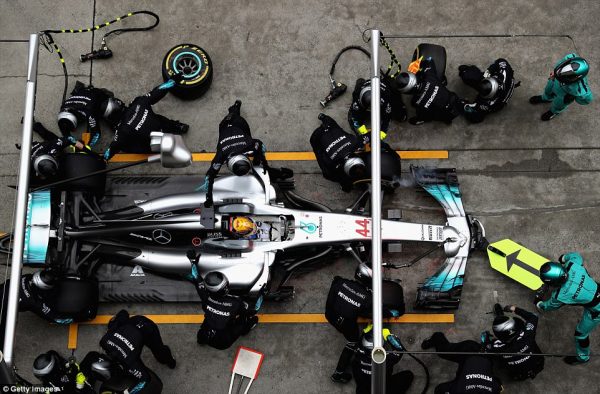
Description
Even Lewis Hamilton needs Pit Stops
Speed is everything
Business moves at an ever-quicker pace, and the pressures have moved from years to months to weeks. The pressure is on keeping moving and not stopping. A frequent rebuff from clients is that ‘we don’t have the time to do this effectively, so we are doing what we can’. This aims to drive progress, but more often than not it means the status quo is maintained, but with more things ‘on top’ (which is the change element), which then becomes a distraction which is easily discarded. The drive and need to deliver instant results is heightened, and therefore the desire to take the time to consider the bigger picture is greatly reduced. Hitting the numbers is the biggest priority and the pace is relentless……but is it wise?The Fastest Cars on the planet slow down and stop to get quicker
In Formula 1 cars can travel (circuit and weather conditions dependent) at speeds of over 210 mph. The focus of teams is to win and get ever faster – by being more efficient (fuel use, aerodynamics, etc) or effective (flat speed, braking) on the circuit. However in order to maintain performance the cars have to stop – the road wears down the tyres and reduces performance, the engine uses fuel which must be refilled - so in order to maintain performance at its optimum the cars comes into the pits and stop. In the pits, fuel is taken on, the tyres are refreshed, and minor changes are made in seconds to ensure the car and driver perform at their best throughout the race. Having recognized that the need to stop is critical in the overall desire to win and compete, teams practice the pit stop over and over to ensure that it gets quicker. At the US Grand Prix in 2013, the Red Bull team completed the fastest ever pit stop, on Mark Webber’s car, at 1.93 seconds…now that is fast.All very interesting but we are a business not an F1 Racing Team
There are two accepted realities that businesses can learn from the pit stop.- In order to maintain speed and efficiency, you have to stop, even just for a short while, to ensure that the vehicle you travelling in is roadworthy, and will not crash or run out of fuel. If you just keep driving you risk disaster. Accept the need and certainty to stop every now and then.
- Having accepted the need to stop – practice getting good at maintaining the vehicle – practice the pitstops, check on the people, and make adjustments. The more you practice, the quicker you become at making the required change. You simply can’t do this when the vehicle is travelling at over 200mph.
Make the car go faster, not just keep going for longer
Every season, the car is improved. Every season the fundamentals are looked at, and time taken to ensure you can improve. Sure, there is a season close (which we don’t get in the business world) but the logic of continuous improvement is the same. Use time to get better, and make improvements, because if you carry on in the same vehicle, the competition will get faster, until the point you can’t compete, unless you make significant and expensive investment. Sustained change, well practiced, and thought through is key.What can you do about this?
- Make time to have the pit stops
- Make time to look at your progress and make continuous improvements
- Focus on winning the whole race, not just being fastest off the start line – this is no good unless you have the pace and stamina to stay there.
- Every question is focused on driving the car faster, not just making it run for longer.
- Practice, practice, practice.
Info
-->





